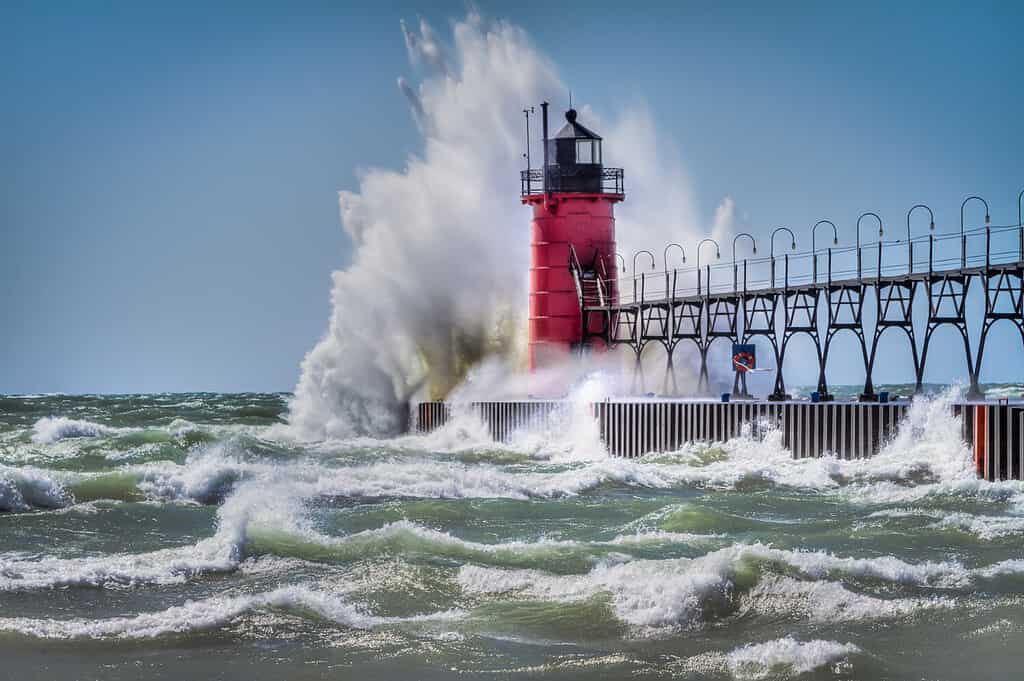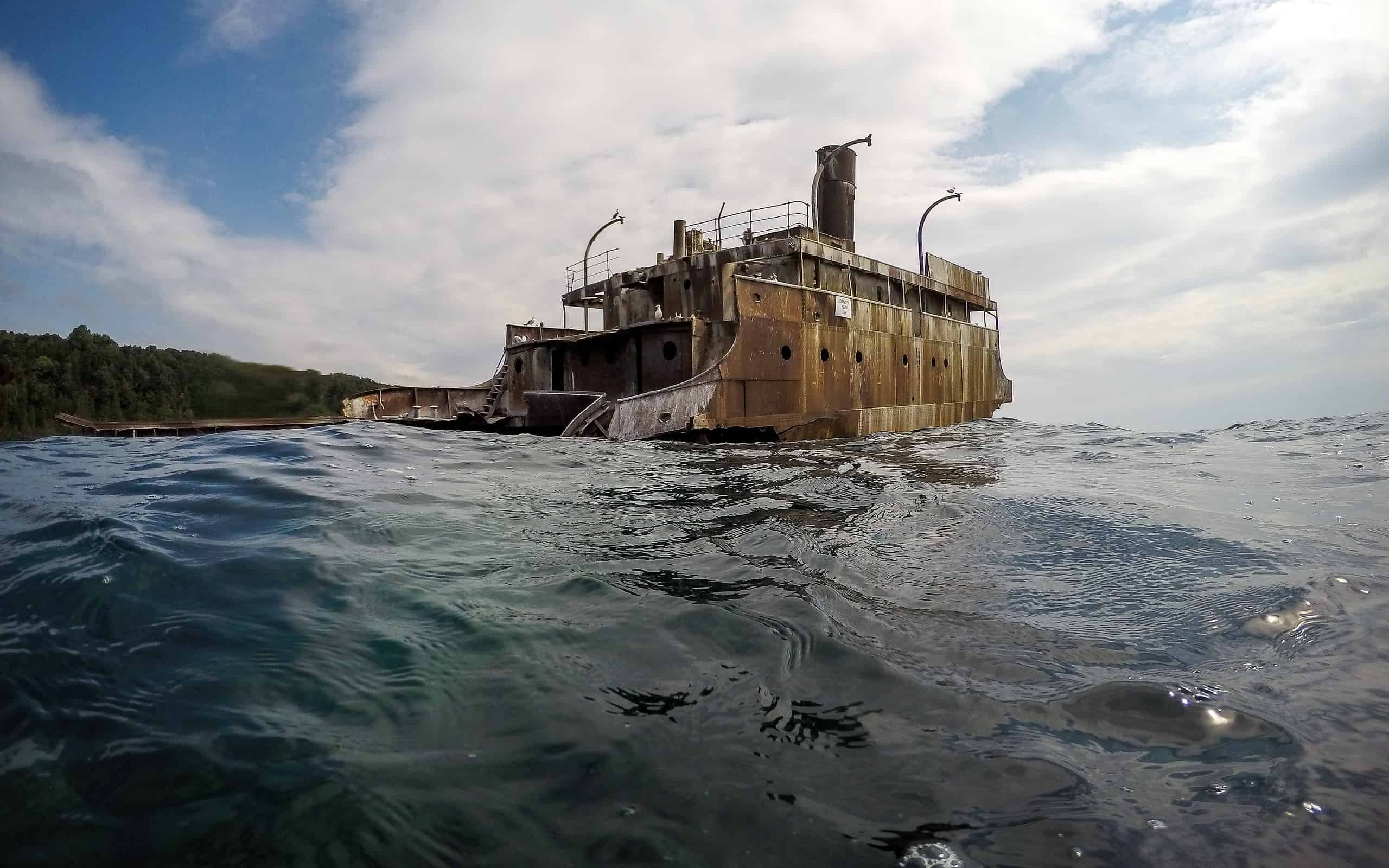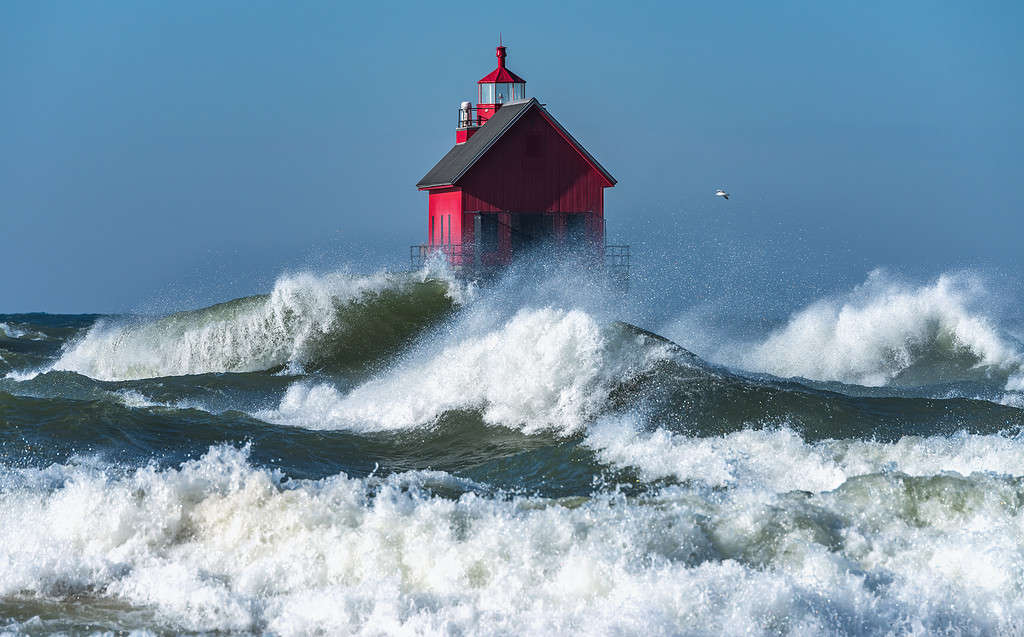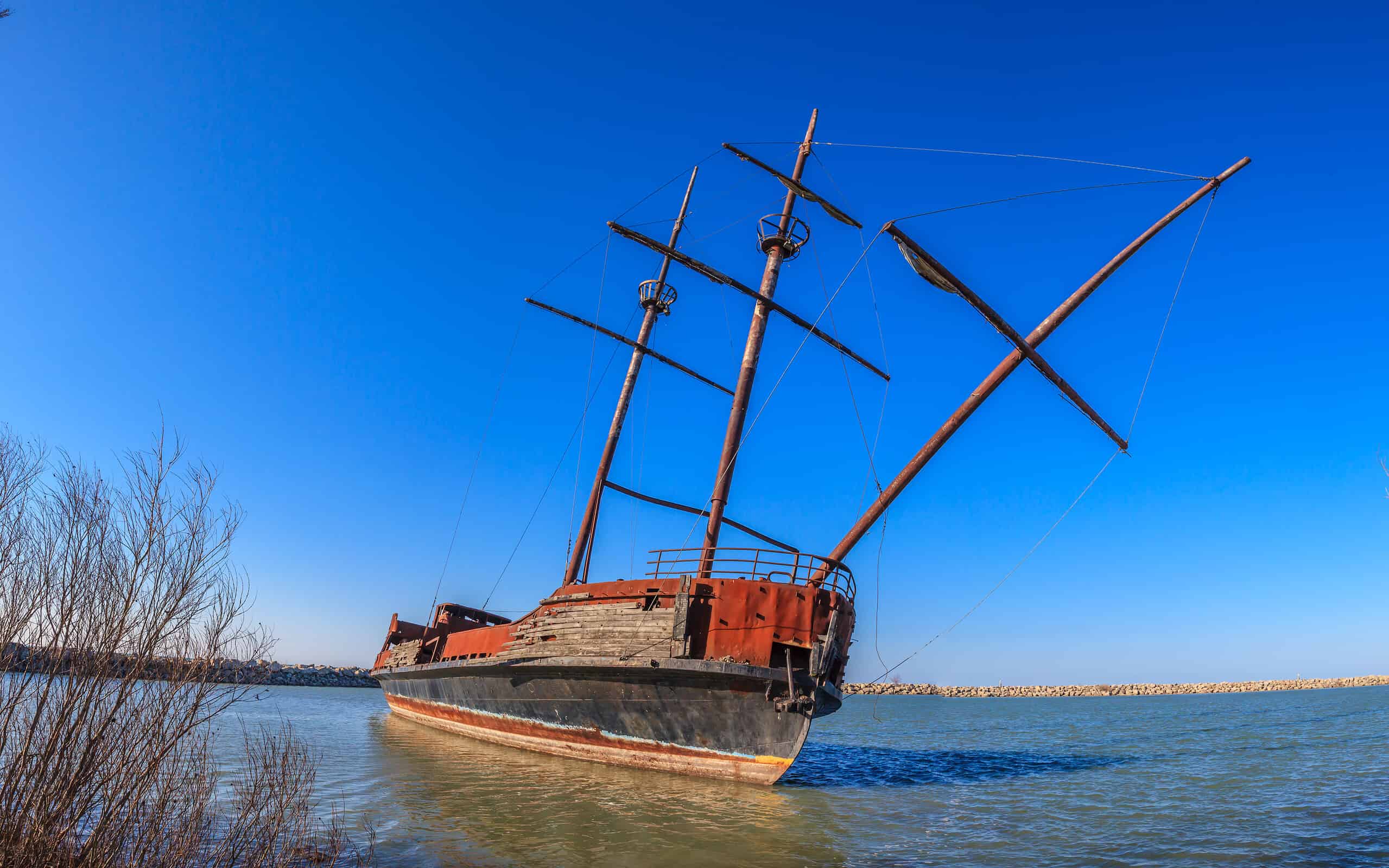For centuries, the lakes have been watery superhighways for pleasure craft, steamboats, barges, container ships, and much more. Storms pop up without warning, sometimes drowning ships.
The Great Lake Michigan
Lake Michigan, according to the Great Lake’s Commission, is the second-largest Great Lake by volume and the only one located entirely within the United States. The waterway is 307 miles north to south and 118 miles east to west. The lake’s average depth is 279 feet, making for a murky maritime graveyard for about 600 wrecks, which seems to be a conservative figure. As the Milwaukee Journal Sentinel reported in 2023, 750 ships from Wisconsin have never returned. Of those wrecks, researchers believe 600 are at the bottom of the lake, yet they can pinpoint the location of only 210.
Shipwreck Haven
Over the years, the number of wrecks has fluctuated, with some sources claiming there are, at a minimum, 1,500 ships lying at the bottom of Lake Michigan. Just in the Wisconsin Shipwreck National Marine Sanctuary — a protected 960 square mile portion of the lake — alone, historians have identified 39 wrecks. Of that number, the cold water of the lake has preserved 15 wrecks so well that they remain intact. Three of the ships still have their wooden masts attached. Researchers say that the sanctuary has more wrecks waiting to be discovered.
It would take far too long to list every ship that Lake Michigan has swallowed. However, here are four noteworthy shipwrecks.

Lake Michigan is the second-largest Great Lake by volume. Records show that the highest wave recorded on Lake Michigan reached 23 feet.
©DeLoyd Huenink/Shutterstock.com
1. Lady Elgin
September 7, 1860, was a day that began with promise in the Wisconsin city of Milwaukee. Around 500 men and women, most Irish immigrants, were looking forward to a peaceful afternoon on Lake Michigan. They planned to sail to Chicago to attend a political rally for Democratic presidential candidate Stephen Douglas. The group, made up of members of a Wisconsin militia opposed to slavery — the burning national issue of the time — looked forward to their sojourn aboard a one-wheeled steamship called Lady Elgin. The group’s goal was to raise money for new weapons. The passengers arrived safely in Chicago. They attended the rally and later reboarded the steamer for the voyage home.
Tragedy
Then tragedy struck. Shortly after 2 a.m. the following day, a fast-moving tempest blew. As the storm whipped the ship, a lumber schooner, Augusta, slammed into the steamer, ripping a hole in Lady Elgin’s hull below the waterline. At first, it didn’t look like the damage was extensive. The Lady Elgin’s crew weren’t worried and signaled to the Augusta that they didn’t need help.
Less than a half hour later, the steamer broke apart, sinking to the bottom of the Great Lake. Some of the passengers desperately clung to the detritus of the ill-fated Lady Elgin, struggling to survive. Less than 100 people lived through the hellish nightmare. The disaster was one of the four biggest shipwrecks (as well as one of the most interesting) on Lake Michigan.

A scuba diver explores an old wooden shipwreck in Lake Michigan. The waters of the Great Lakes are so cold that they preserve the many wrecks on the bottom.
©Velvetfish/iStock via Getty Images
2. S.S. Carl D. Bradley
From her launch in 1927, the S.S. Carl D. Bradley was the biggest ship to sail the waters of the Great Lakes. Called by many “The Queen of the Lakes,” the Bradley was the pride of the Bradley Transportation company. Its main job was to haul limestone quarried near Rogers City, her home port. On November 17, 1958, the Bradley set sail in what was to be the last voyage of the season. When she departed Gary, Indiana, the winds were blowing between 25 and 35 miles per hour.
Still, the weather forecast that day, according to the official U.S. Coast Guard report, was tinged with foreboding. Southerly winds were expected to increase to between 50 and 65 miles per hour. “Although the wind velocity increased during the period, sea conditions were not considered severe, and the vessel was riding smoothly,” according to the report.
Alarm Bells
The Bradley was a steamer, and its crew steered a course up the coast of Wisconsin to Cana Island, speeding along at between 14 and 15 knots. It then cut across the lake toward Lansing Shoal. As it did, the storm became angrier, and by midday on November 18, winds were blowing at 65 miles per hour. Still, the Bradley performed brilliantly. The crew ate an early dinner as their captain steamed toward Lake Huron. At around 5:30 p.m., the crew heard a thud and felt a vibration. The chief mate looked aft and saw the stern sagging. “It was immediately realized the vessel was in serious trouble,” the Coast Guard investigation said.
An alarm sounded. The crew prepared to abandon the ship. The chief mate sent out a “mayday” about 12 miles southwest of Gull Island. The Bradley only had two lifeboats. The crew could not launch one as some cables began to get entangled. Witnesses on another ship some four miles from the Bradley reported a “flash of flame” as the ship exploded. The Bradley sunk. Of the 35 sailors on board, 33 died that day, 23 from the same town. The Bradley was 639 feet long and, as such, is the biggest Lake Michigan shipwreck.

1960 shipwreck in Lake Michigan, declared a total loss, owner never identified.
©James Brady/iStock via Getty Images
3. Alpena
The Alpena was a sidewheel steamship that began its journey on a beautiful fall day in 1880. Captained by Nelson W. Napier, who lived in St. Joseph, Michigan, the Alpena was 197 feet long. Its hull was wood. The ship left port at Grand Haven, Michigan, on October 15, under brilliant sunshine, bound for Chicago. But something wasn’t right. The ship’s barometer belied the lovely fall day. It was dropping, indicating a storm was coming.
The next day, at around 3 a.m., a storm with gale-force winds whipped across the region in what people have since called “The Big Blow.” As the storm raged, the Alpena came into view thrice between 6 a.m. and 8 a.m. on October 16. The captain of the barge City of Grand Haven witnessed the Alpena struggling against the high seas and catastrophic wind 35 miles an hour off Kenosha, Wisconsin. Others saw the ship on her side. What happened next is anyone’s guess. Debris from the boat, including a piano, ended up on the beaches of Holland, Michigan.
“The wreck is complete,” the local newspaper reported on October 23. “She is broken into small fragments. The stern part of her hull lies near the harbor. The whole coast for 20 miles is strewn with debris…”
How many people lost their lives aboard the Alpena is lost to history. At the time, the Holland City News reported 80 people had died.

Grand Haven Lighthouse at Lake Michigan with high waves. Storms pop up without warning, sometimes drowning ships.
©Meybruck/iStock via Getty Images
4. Le Griffon
One of the most enduring mysteries of Lake Michigan is what happened to the Le Griffon, which many say is the oldest European vessel to weigh anchor on the Great Lakes. The ship belonged to the French explorer Frank de La Salle. As the story goes, La Salle set sail in 1679 and was never seen again. The ship was loaded with furs, and many believe it met its watery demise in the northern reaches of Lake Michigan.
For decades, Steve and Kathie Libert have been searching for the wreck. They say the Le Griffon is at the bottom of the lake near a tiny island off Michigan’s Upper Peninsula. They have explored the site and used primary documents in their search.
Watery Graveyards
Still, Lake Michigan is not the only Great Lake with its share of shipwrecks. Every lake, from Huron to Superior, Erie to Ontario, has its own stories to tell. Some wrecks are famous, such as the 1975 sinking of the Edmund Fitzgerald on Lake Superior, which gave rise to a popular song by singer Gordon Lightfoot. Researchers documented 277 wrecks so far in Lake Erie. There may be at least 1,500.
Some researchers say, in total, there are at least 6,000 shipwrecks at the bottom of the Great Lakes. It’s hard to get an exact number because discoveries are being made all the time. While author and Great Lake historian Mark L. Thompson can only guess how many shipwrecks there really are, his research suggests that there could be 25,000 or more. “Unfortunately, we have only limited information on most of the shipwrecks that took place on the Great Lakes,” he writes in Graveyard of the Lakes. “Not until 1936 were marine casualty boards impaneled to investigate shipping casualties…”

A three-masted sailing ship sits alone on Lake Erie.
©Pictures-and-Pixels/iStock via Getty Images
Thank you for reading! Have some feedback for us? Contact the AZ Animals editorial team.








